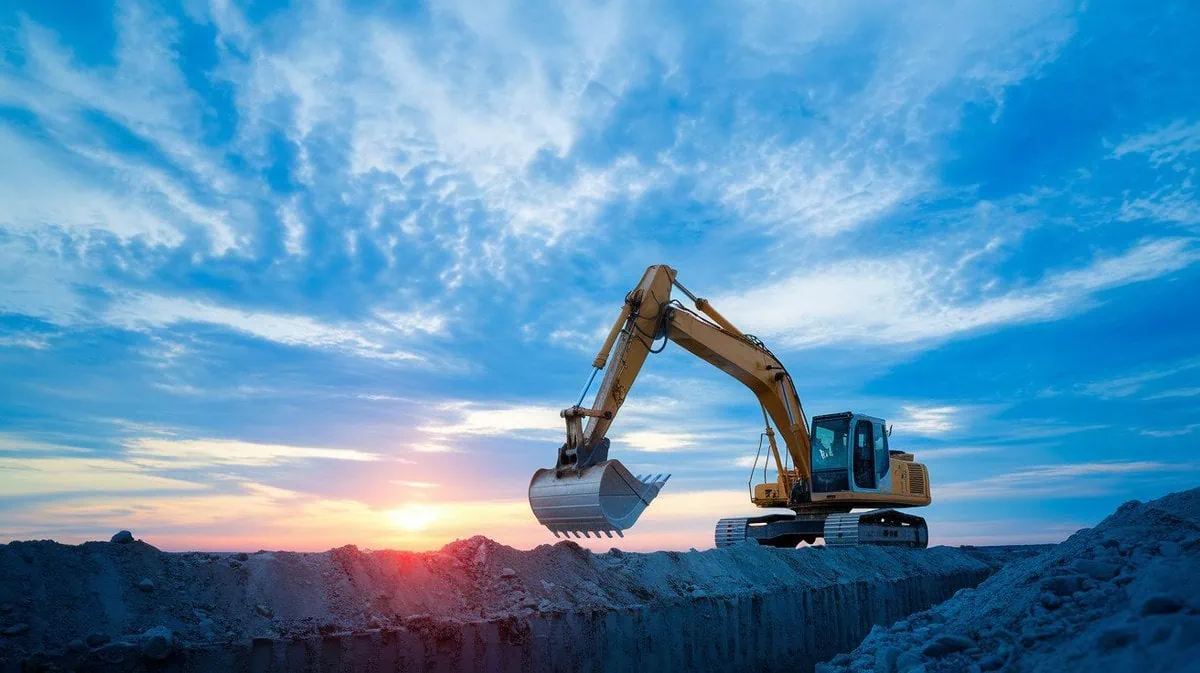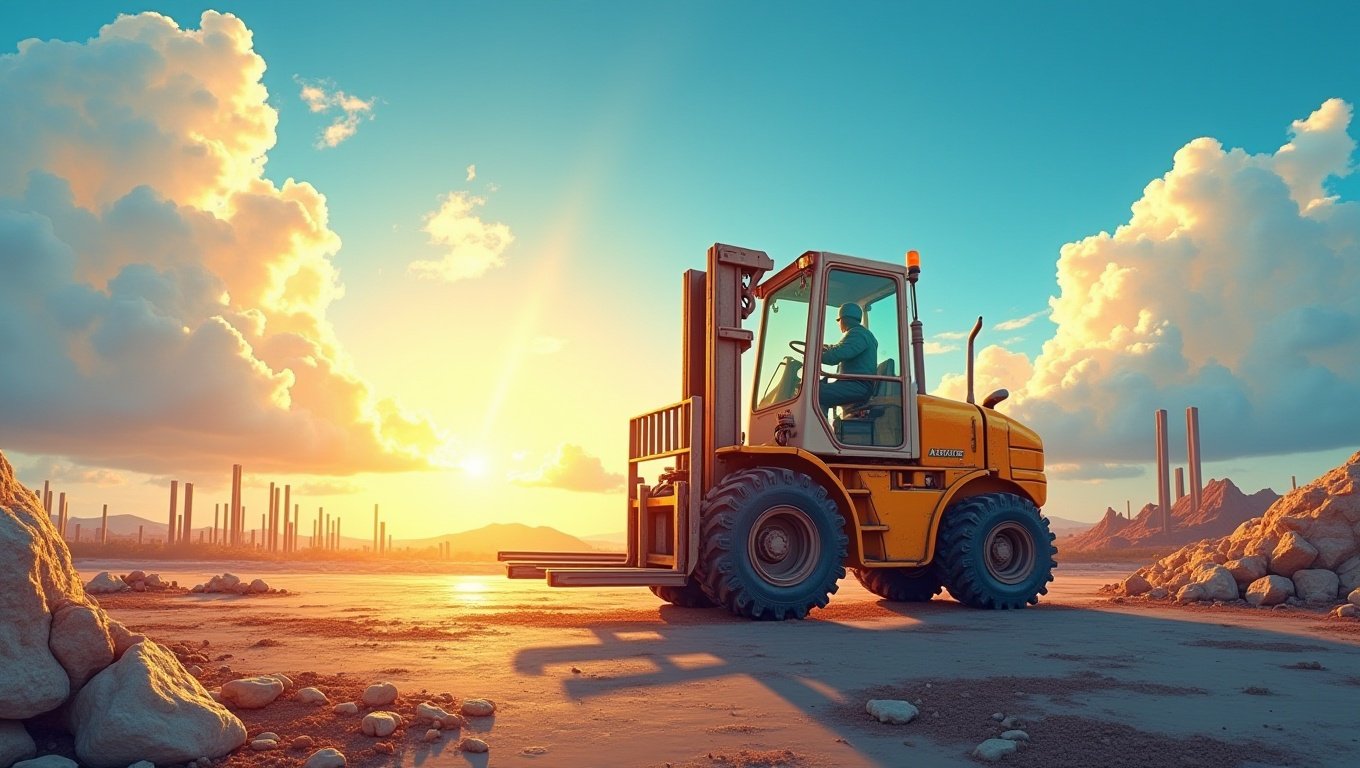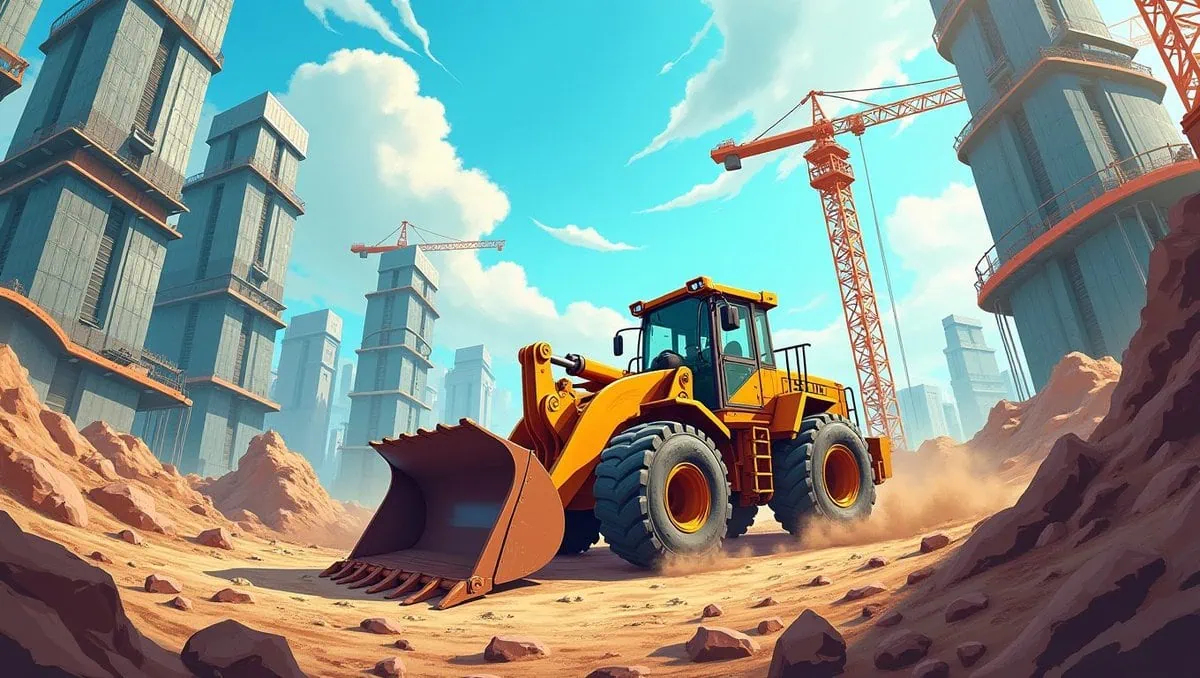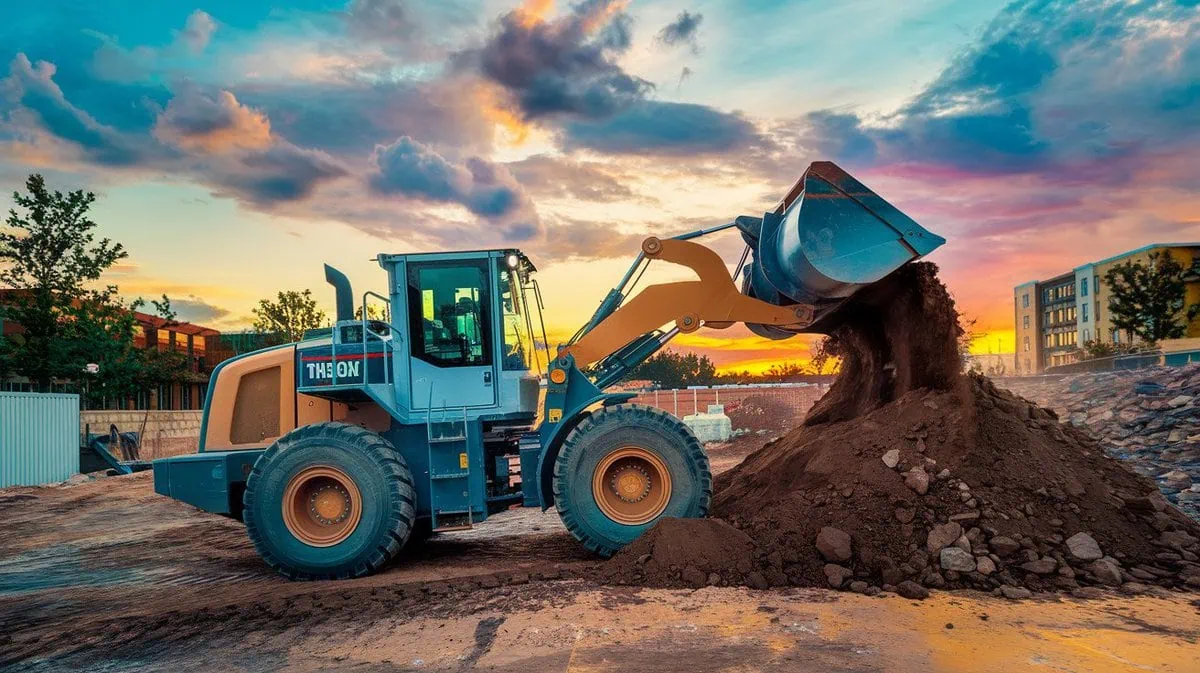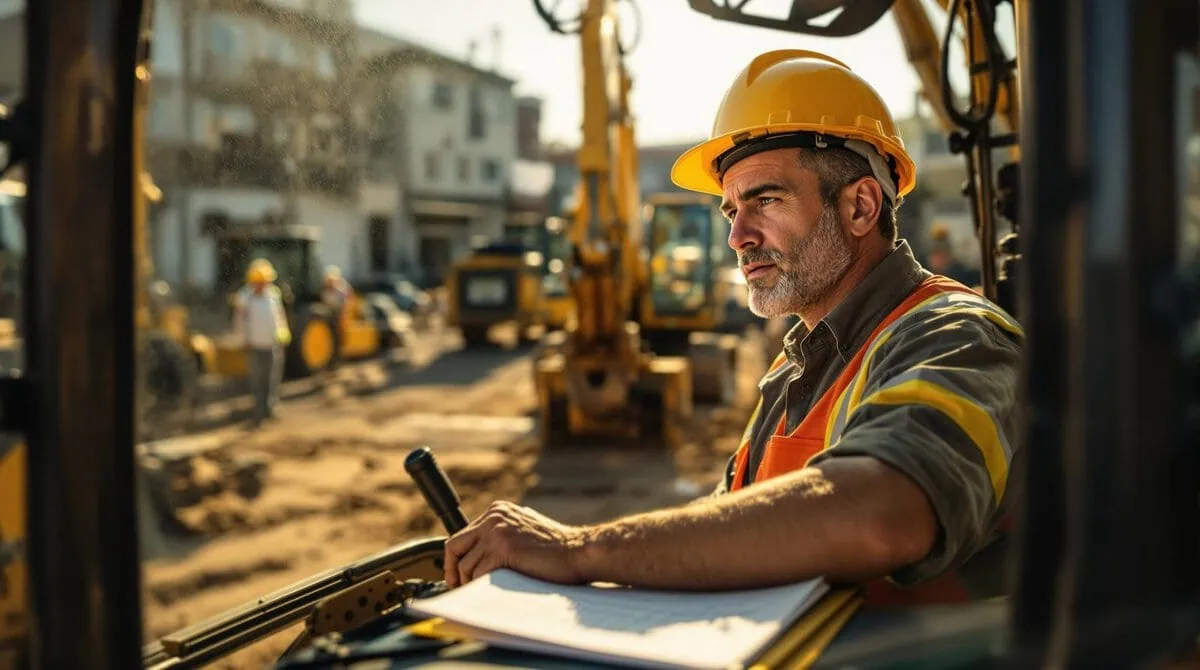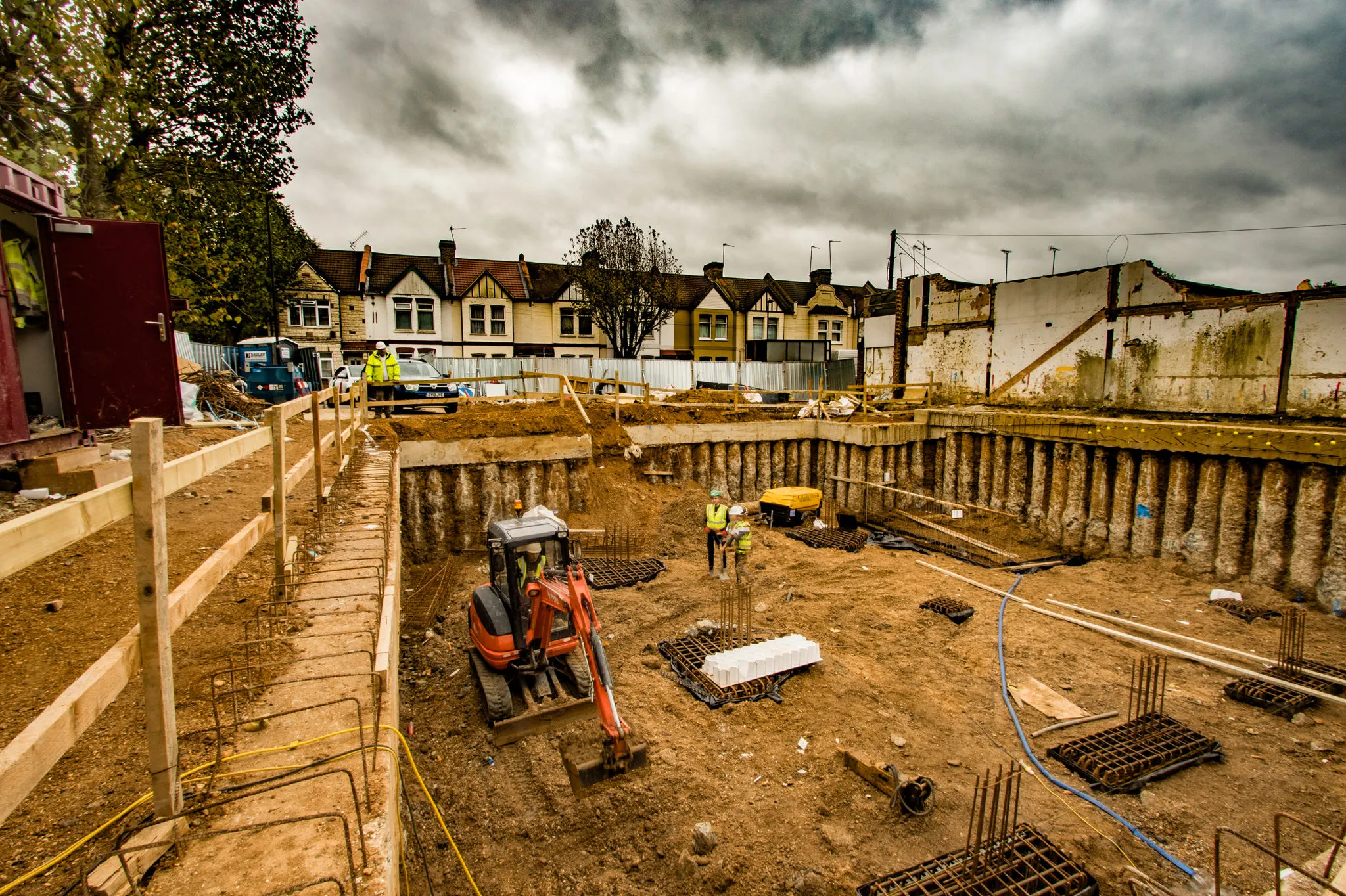Bulldozer vs Front end loader: To select the correct piece of heavy equipment for your business needs, you have to know what your options are and how they differ from each other. Understanding the distinctions and differences between a bulldozer and a front-end loader will allow you to make the most of your machines.
A bulldozer vs front end loader are both essential construction machines, but they have different functions. The bulldozer is known for its powerful pushing ability, perfect for heavy earthmoving tasks. On the other hand, the front end loader is designed for lifting and carrying materials, making it ideal for tasks like loading and hauling. This article delves into the unique features and applications of each, highlighting key factors to consider when deciding between the two.
In this guide, we’ll take a closer look at each machine, what it’s designed to do, what it operates well on, and why you should choose one over the other.
1,What is a Bulldozer?
The front of the bulldozer has a large, flat blade and the heavy weight of the machine makes it good for construction, demolition, and earthmoving. It can push large amounts of dirt and debris. It can also be used to level out surfaces.achines like bulldozers are critical in shaping the land and construction in residential and commercial development.
Bulldozers move a lot of dirt. These machines are good for moving massive amounts of dirt, sand, and rocks. They are used on major construction projects like roads, mines, and clearing a site for a building. They can push in a straight line in any direction across a swath you are working on. The blade on the front of the bulldozer can be set at an angle so you can push large quantities of dirt, material, and rocks off to the side or level it out.
Engineers designed bulldozers for maximum power and maximum durability. They have tracks instead of wheels so their weight is spread evenly across a large area. This allows you to drive one across soft ground or mud without getting stuck. Tracks also give them a lower center of gravity and better traction, making them ideal to operate on uneven ground or tough conditions. You can add a ripper to the back of a bulldozer to break up hard materials such as rock. This makes a bulldozer an excellent machine for construction sites, mines, and land reclamation.
So, if you have a big construction project that needs a large amount of dirt moved, a bulldozer might be the first machine on your job site. They are perfect for clearing land for new projects, building roads, or clearing a site for a new house or commercial building due to their powerful engine and the amount of dirt they can move quickly. Some late-model bulldozers have an optional laser-guided system to help with grading land more consistently. This upgrade can make these efficient machines even more efficient in this critical task.

2,What is a Front End Loader?
Our next piece of equipment is called a front end loader, which is also essential. It is designed to lift and carry material from one place to another. Unlike a bulldozer that is designed primarily for pushing, a front end loader has a large bucket on the front end that can scoop, lift, and carry material from place to place. It does not have a system to push material. That makes these pieces of equipment better for loading and material handling than something like a bulldozer, which is more like a beast of burden.
Front end loaders move stuff like gravel, sand, dirt, rocks, or debris. They are versatile and found on all kinds of construction sites, in quarries, and on farms where the ability to move lighter materials is essential. Since they have a toothed bucket, they are excellent for loading things, digging smaller holes, or moving loose material quickly.
Front end loaders have big great wheels to move themselves around. They are very mobile on flat surfaces. They are a quick machine that allows an operator to do many different tasks, like loading material into a truck or picking up debris. Since they are loaders, you can lift the bucket and lower the bucket. It makes them very flexible for moving all kinds of material around. Some advanced loaders will also allow the bucket to tilt back for easier loading into the bucket.
One of the significant advantages of a front end loader is speed and effectiveness when it comes to loading material. If you are moving sand, gravel, or dirt, you can load a ton (big truck) very quickly with a front end loader. The front end loader is a light pair of wheels so that the machine is more mobile than its tracked mail cousin, the bulldozer. So, front end loaders are better for smaller jobs in construction or landscaping where you can get by with a light machine like a front end loader.
You generally find front end loaders in a situation where the material needs picked up and moved. Loading docks can have front end loaders. Quarries and recycling centers are good places for front end loaders to move and scoop loose material up and move it to another place. People use them to do other jobs like minor digging, snow removal, or even picking up a big heavy piece of equipment to move it out of the way.
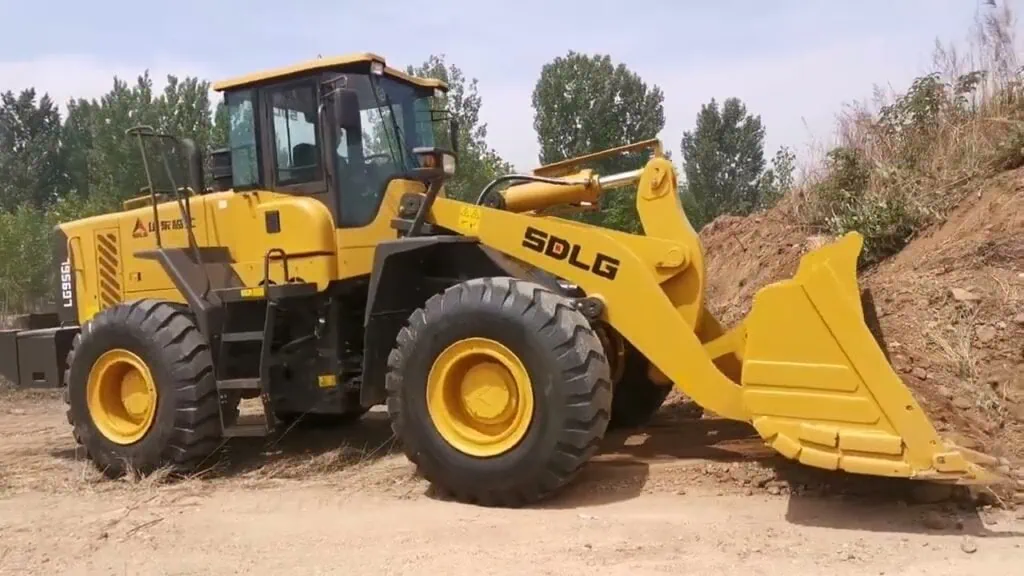
3,Bulldozer vs Front End Loader: What’s the Main Difference?
The significant difference between a bulldozer vs front end loader is the design of the equipment and what they are good at doing. Although both pieces of equipment are used to lift and move heavy things, they are optimized to do different jobs.
A bulldozer is great at pushing large amounts of material. That means it is perfect for moving earth and clearing land. A front end loader, on the other hand, is designed to lift and carry materials, so it is ideal for loading and transporting. The great thing about these two pieces of equipment is that they are paid for doing the same thing – moving dirt, but they do it in different ways. One is built for pushing, the other for lifting.
People rent bulldozers when you have a lot of pushing to do. That could mean clearing land, grading roads, or getting a site ready to build a house. The blade on the front of a bulldozer can be angled up at varying elevations, so you can move tons of earth or debris easily with a bulldozer. Plus, bulldozers ride on tracks, so they can move through rough or muddy terrain pretty easily. That’s one of the reasons they rock for helping to build land forms for jobs like road building or mining.
When you need to lift and move materials, you might choose a front end loader. People use this piece to complete tasks such as loading material onto a truck, picking up debris, or moving gravel from point A to point B. Front end loaders have wheels and can travel between sites quickly because they sit higher off the ground than a bulldozer. This means they move better and faster on flat surfaces and won’t destroy pavement because the rubber tires don’t dig into the ground.
Here is the featuresof bulldozerand front end loader:
| Feature | Bulldozer | Front End Loader |
| Primary Function | Pushing and moving large volumes of material | Lifting, scooping, and transporting materials |
| Design | Large, heavy blade at the front; equipped with tracks | Large bucket at the front; equipped with wheels |
| Terrain Type | Works on rough, uneven, and soft terrains | Works best on flat, paved, or slightly uneven surfaces |
| Manuseio de materiais | Primarily for earthmoving and grading | Primarily for loading, lifting, and transporting materials |
| Power Source | High-powered engine with more torque for pushing | Engine designed for lifting with faster movement |
| Attachments | Can have ripper attachments for breaking tough materials | Can have different buckets for varied material types |
| Speed | Slower due to tracks and heavy-duty construction | Faster due to wheels, suitable for material transport |
| Size and Weight | Larger and heavier, requires more space to operate | Smaller and lighter, more maneuverable |
4,How to Choose Between a Bulldozer and Front End Loader?
The key to renting a bulldozer vs a front end loader is to understand what job you’re doing. Each machine offers unique benefits depending on what you are doing. If you choose the wrong machine, you’ll get the job done anyway, but you’ll be slower and less effective and it will cost you more to do your work.
Pick a bulldozer or a front end loader based on what kind of material you’re working with, what the terrain is, and how much work you have to do. If you need to move huge piles of dirt or clear some land, then rent the bulldozer. If you need to load and move stuff, then rent the front end loader so you can do it more efficiently.
When would you use a bulldozer vs a front end loader? Everything is based on the scale of the job, what material you are moving, and the ground you are running on. Rent a bulldozer when you have a lot of dirt to move, like clearing a lot of heavy clay soil, grading a property, or digging all the dirt out to build an underground dog house (just kidding). A bulldozer is your tool of choice for moving a lot of material over challenging terrain.
In contrast, a front end loader is more commonly used for tasks where material lifting and transport are the primary needs. These tasks could include loading materials onto trucks, lifting debris, or moving gravel around a site. Unlike bulldozers, front end loaders are equipped with wheels that offer superior mobility on flat and paved surfaces. This makes them ideal for tasks where speed and maneuverability are essential.
The final criterion you can use to evaluate whether you should use a bulldozer or a front end loader is the size of the job. If you have a large job and need to move a lot of earth, then the bulldozer is your best option. On the other hand, if you have a smaller job and need to move a couple of truckloads of dirt or clear a driveway, a front end loader will make faster work of your job every time.
| Applications | Bulldozer | Front End Loader |
|---|---|---|
| Land Clearing | Ideal for clearing large areas of land | Not typically used for large-scale land clearing |
| Road Construction | Commonly used for grading and leveling roads | Used for loading materials for road construction, but not for grading |
| Mining | Effective for heavy earthmoving in mining operations | Can be used in mining for loading and material transport |
| Site Preparation | Used for grading and preparing construction sites | Used for loading materials on-site, but not for grading |
| Manuseio de materiais | Less suitable for lifting and carrying materials | Ideal for loading, lifting, and hauling materials |
| Construction | Used for large-scale construction work | Used for material transport, loading, and handling tasks |
| Agriculture | Rarely used in agriculture, mainly for large-scale projects | Often used in farming for handling bulk materials like gravel or hay |
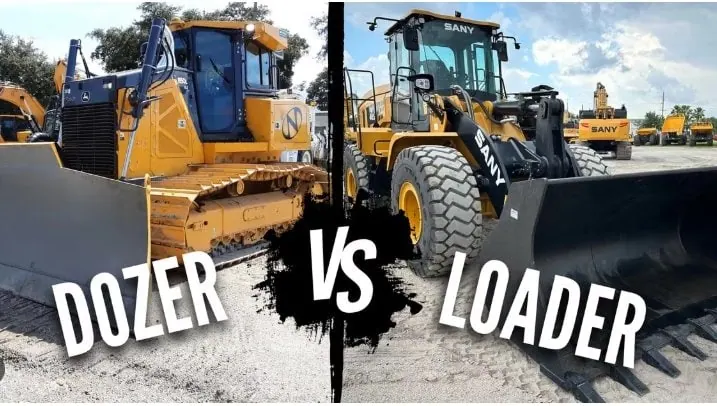
5,Which One is More Cost-Effective: Bulldozer vs Front End Loader?
One of the main considerations when choosing between a bulldozer or a front end loader, besides the activity each one performs, is the upfront cost and how much it costs to run each machine.
Even though a bulldozer and a front end loader both perform specific tasks, the choice you make has an initial cost. And the cost to run the machine varies over time.
When it comes to cost, you have to consider the initial outlay and what it will cost to run a bulldozer and a front end loader over time. Bulldozers typically cost more to buy due to being bigger and heavier, with their specialized parts, like tracks, heavy-duty engine, etc. They also can cost more to feed and maintain because they are designed for tougher jobs. But when you need a lot of earth moved, they can pay for themselves over time with the work they can save you on more extensive jobs.
In contrast, front end loaders generally cost less to buy. Burning diesel fuel costs less per hour to operate. But you might pay more in the long run running a front end loader because they will tend to break more often and need more routine maintenance, especially if you’re using them on rough or uneven terrain. The lower upfront cost makes front end loaders the better choice for smaller projects or when you need the versatility of a fast, mobile piece of equipment.
The correct choice of a bulldozer vs front end loader depends on the specific needs of your project. Both machines have their use cases. This consideration will ensure you pick the best machine to help make your operation more efficient and economical.
| Advantages | Bulldozer | Front End Loader |
|---|---|---|
| Power and Durability | Extremely durable, capable of moving large volumes of material | Efficient at quick material handling and transport |
| Versatility | Excellent for a wide range of earthmoving tasks | Highly versatile in lifting, carrying, and loading various materials |
| Traction and Stability | Tracks provide greater traction on soft or uneven ground | Wheels provide faster movement on smoother surfaces |
| Precision | Less precise in material handling, but effective for heavy tasks | Offers better control for precise lifting and material movement |
| Cost-Effectiveness | Ideal for large-scale earthmoving projects | More cost-effective for smaller tasks and material handling |
| Maneuverability | Less maneuverable due to larger size and tracks | More maneuverable, especially on flat surfaces |
Summary
When selecting construction equipment, understanding the differences between bulldozers and front end loaders is essential for making an informed decision.
Bulldozersare heavy-duty machines designed for earthmoving and land clearing tasks. They feature a large, adjustable blade that can push and level large volumes of dirt, sand, and rocks. Equipped with tracks, bulldozers offer excellent stability and traction on rough, muddy terrains, making them ideal for large-scale projects like road building or mining. They can also come with ripper attachments for busting up hard things.
Front end loaders, on the other hand, are designed for lifting and transporting materials. With a large bucket, they can scoop and move lighter items like gravel or debris. Front end loaders have wheels for moving around faster on flat surfaces, making them excellent for helping out and moving materials quickly. They are good for loading trucks and other tasks on construction sites, quarries, and farms.
The choice between a bulldozer and a front end loader depends on what you will be pushing, pulling, or moving, as well as the ground or terrain. It also depends on how much stuff you need to move and how quickly you need to move it. Lastly, the cost of ownership, which includes the buy price and what it costs to run it day to day, plays a crucial role in the decision-making process.

